How AI Chatbots Transform Ecommerce for Beginners

Imagine running your e-commerce store with the best AI chatbot for eCommerce as your assistant, working 24/7 to answer customer questions, recommend products, and even boost your sales. That’s exactly what Sobot’s AI chatbots do—they revolutionize how businesses engage with customers. Over 50% of online shoppers now expect personalized experiences, and these chatbots deliver that seamlessly. Businesses leveraging AI report a 40% revenue boost, with sales increasing by 67%. These impressive figures highlight why e-commerce beginners like you should take notice. Tools like Sobot’s AI-powered online chatbots streamline customer service, making your store more efficient and profitable.
Beginner's Guide to Ecommerce Chatbots
What Are Ecommerce Chatbots?
Ecommerce chatbots are virtual assistants designed to interact with your customers on your online store. They use artificial intelligence (AI) to answer questions, recommend products, and even guide shoppers through the checkout process. Think of them as your 24/7 customer service team, always ready to help.
These chatbots are becoming a must-have for online businesses. Why? Because they meet customer expectations for instant responses and personalized experiences. In fact, 90% of consumers believe businesses should use chatbots, and 68% enjoy the quick replies they provide. With the global chatbot market projected to hit $994 million by 2024, it’s clear that these tools are here to stay.
How Do Ecommerce Chatbots Work?
Ecommerce chatbots operate using AI, natural language processing (NLP), and machine learning. When a customer types a question, the chatbot analyzes the text, understands the intent, and provides a relevant response. For example, if someone asks, “What’s your return policy?” the chatbot can instantly pull up the answer from its knowledge base.
These bots don’t just stop at answering questions. They can also assist with lead generation, product recommendations, and even closing sales. Did you know that 35% of consumers have purchased items with chatbot assistance? Plus, they’re available 24/7, ensuring your store never misses an opportunity to engage with customers.
Common Features of Ecommerce Chatbots
Most ecommerce chatbots come packed with features that make them indispensable for online businesses. Here are some of the most common ones:
- Multilingual Support: With 75% of shoppers preferring to shop in their native language, this feature helps you connect with a global audience.
- Omnichannel Integration: Chatbots can interact with customers across platforms like WhatsApp, social media, and your website.
- 24/7 Availability: They never sleep, ensuring your customers always get the help they need.
- Personalization: By analyzing customer data, chatbots can offer tailored product recommendations and promotions.
- Ease of Use: Many chatbots, like Sobot’s AI Chatbot, require no coding to set up. You can design workflows with a simple point-and-click interface.

These features not only enhance customer satisfaction but also improve your store’s efficiency. For instance, Sobot’s chatbot can boost productivity by 70% and cut costs by up to 50%. It’s a win-win for both you and your customers.
Benefits of AI Chatbots in Ecommerce
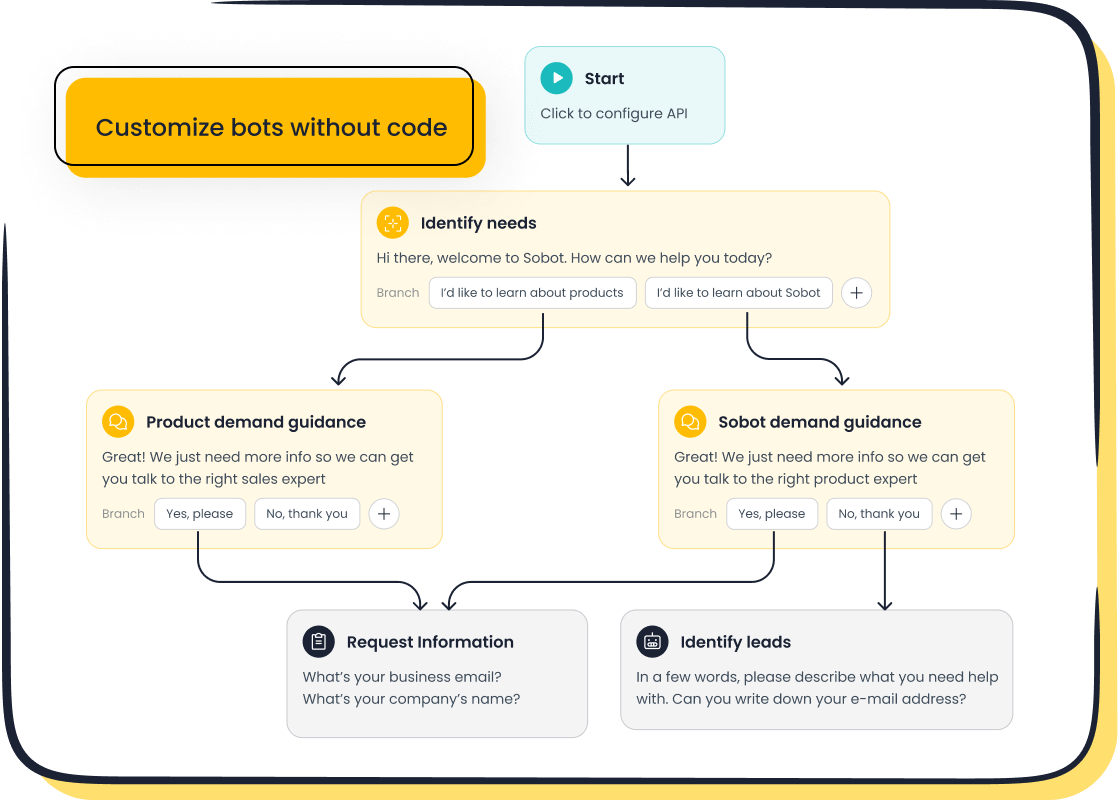
Enhancing Customer Service with AI Chatbots
AI chatbots are game-changers when it comes to improving customer service. They’re available 24/7, which means your customers can get help anytime, even during holidays or late at night. No more waiting in long queues or dealing with delayed responses. These chatbots process data instantly, providing quick and accurate answers to customer queries. For example, a leading pet tech company reduced its response time by 30% after adopting an AI chatbot.
What’s more, chatbots don’t just answer questions—they also guide customers through processes like returns or tracking orders. This makes their experience smoother and more enjoyable. By resolving issues efficiently, chatbots help you build trust and loyalty with your audience. Plus, they can handle multiple conversations at once, ensuring no customer feels ignored.
Here’s why AI chatbots improve customer service:
- They provide instant, round-the-clock assistance.
- They offer personalized recommendations based on customer preferences.
- They resolve queries quickly, creating seamless experiences.
With tools like Sobot’s AI chatbot, you can take your customer service to the next level. It’s multilingual, easy to set up, and integrates with platforms like WhatsApp and social media. This ensures your customers always feel supported, no matter where they are.
Boosting Sales and Conversions
AI chatbots don’t just improve customer service—they also help you increase sales. By analyzing customer behavior, these bots can recommend products that match their preferences. This personalized shopping experience encourages customers to make purchases. In fact, businesses using AI for recommendations have seen conversion rates jump by up to 20%.
Let’s look at some numbers. According to MDS Blog, AI chatbots can boost sales by 67% and increase revenue by up to 40%. They also help reduce cart abandonment by sending reminders or offering discounts at the right time. Imagine a customer leaving your site without completing their purchase. A chatbot can step in, ask if they need help, and even suggest similar products to keep them engaged.
Here’s a quick breakdown of sales improvements with AI chatbots:
| Source | Sales Increase Percentage |
|---|---|
| MDS Blog | +15% conversion rate lift |
| MDS Blog | 67% increase in sales |
| Thunderbit | Up to 25% sales conversions |
| Thunderbit | Up to 25% revenue boost |
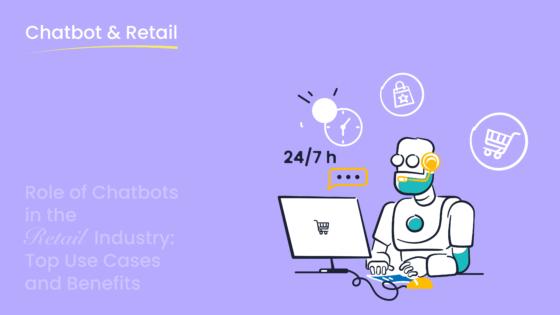
Sobot’s AI chatbot is designed to help you achieve these results. It uses smart self-service and proactive messaging to engage customers and close sales. With its ability to operate 24/7, you’ll never miss an opportunity to convert visitors into buyers.
Personalizing Customer Experiences
Personalization is key to standing out in today’s competitive ecommerce world. AI chatbots excel at creating a personalized shopping experience by analyzing browsing history, past purchases, and customer preferences. This allows them to suggest products or promotions tailored to each individual.
For example, Amazon’s recommendation engine, powered by AI, drives about 35% of its total sales. That’s the power of personalized interactions! Chatbots can replicate this success by offering tailored product recommendations and upselling opportunities. They also provide personalized support, making customers feel valued and understood.
Here are some stats that highlight the impact of personalization:
| Statistic | Value |
|---|---|
| Companies using chatbots for marketing experience an increase in leads | 55% |
| Chatbots achieve conversion rates in specific industries | Up to 70% |
| Buyers more likely to shop with messaging services | 53% |
| Digital assistants contribute to upselling | 20% |
Sobot’s AI chatbot takes personalization to the next level. It uses advanced AI algorithms to understand customer behavior and deliver tailored experiences. This not only improves customer satisfaction but also boosts retention and repeat purchases. By leveraging the power of AI chatbots, you can create meaningful connections with your audience and foster long-term loyalty.
Reducing Operational Costs
Running an e-commerce business can get expensive, especially when you’re trying to manage customer service. Hiring and training agents, maintaining infrastructure, and handling peak-time inquiries can quickly add up. That’s where AI chatbots come in—they’re a cost-effective solution that helps you save money while improving efficiency.
One of the biggest advantages of chatbots is their ability to handle routine queries. Did you know that chatbots can resolve up to 80% of common customer questions? This means fewer agents are needed, which directly reduces staffing costs. For example, businesses using AI chatbots have reported saving up to 30% on operational expenses. These savings can be reinvested into other areas of your business, like marketing or product development.
Chatbots also work 24/7 without requiring overtime pay. They can manage multiple conversations at once, ensuring no customer is left waiting. This scalability means you don’t have to hire extra staff during busy seasons. Plus, chatbots provide consistent and accurate responses, reducing the need for follow-ups and lowering error rates.
Here’s a quick look at how chatbots improve operational efficiency:
| Metric | Description |
|---|---|
| Reduced Operational Costs | Chatbots decrease the need for human agents, leading to lower staffing costs. |
| Increased Efficiency | Instant responses 24/7 reduce wait times and increase the number of queries resolved per hour. |
| Scalability | Chatbots can handle multiple conversations simultaneously without additional costs. |
| Lower Error Rates | Consistent and accurate AI responses reduce the need for follow-up interactions. |
| Cost per Interaction | Compare expenses of chatbot-handled queries versus human-handled ones. |
| Resolution Time | Measure the speed of issue resolution with chatbots compared to traditional methods. |
| Customer Satisfaction Scores | Monitor changes in CSAT scores after chatbot implementation. |
| Agent Productivity | Evaluate improvements in human agent efficiency when relieved from routine inquiries. |
| Conversion Rates | Track the impact of chatbot interactions on sales for e-commerce businesses. |
AI chatbots can resolve a large portion of routine questions at a fraction of the cost. An IBM report shows that chatbots can handle up to 80% of routine inquiries, cutting customer support costs by 30%. They provide 24/7 service, increasing customer satisfaction and loyalty.
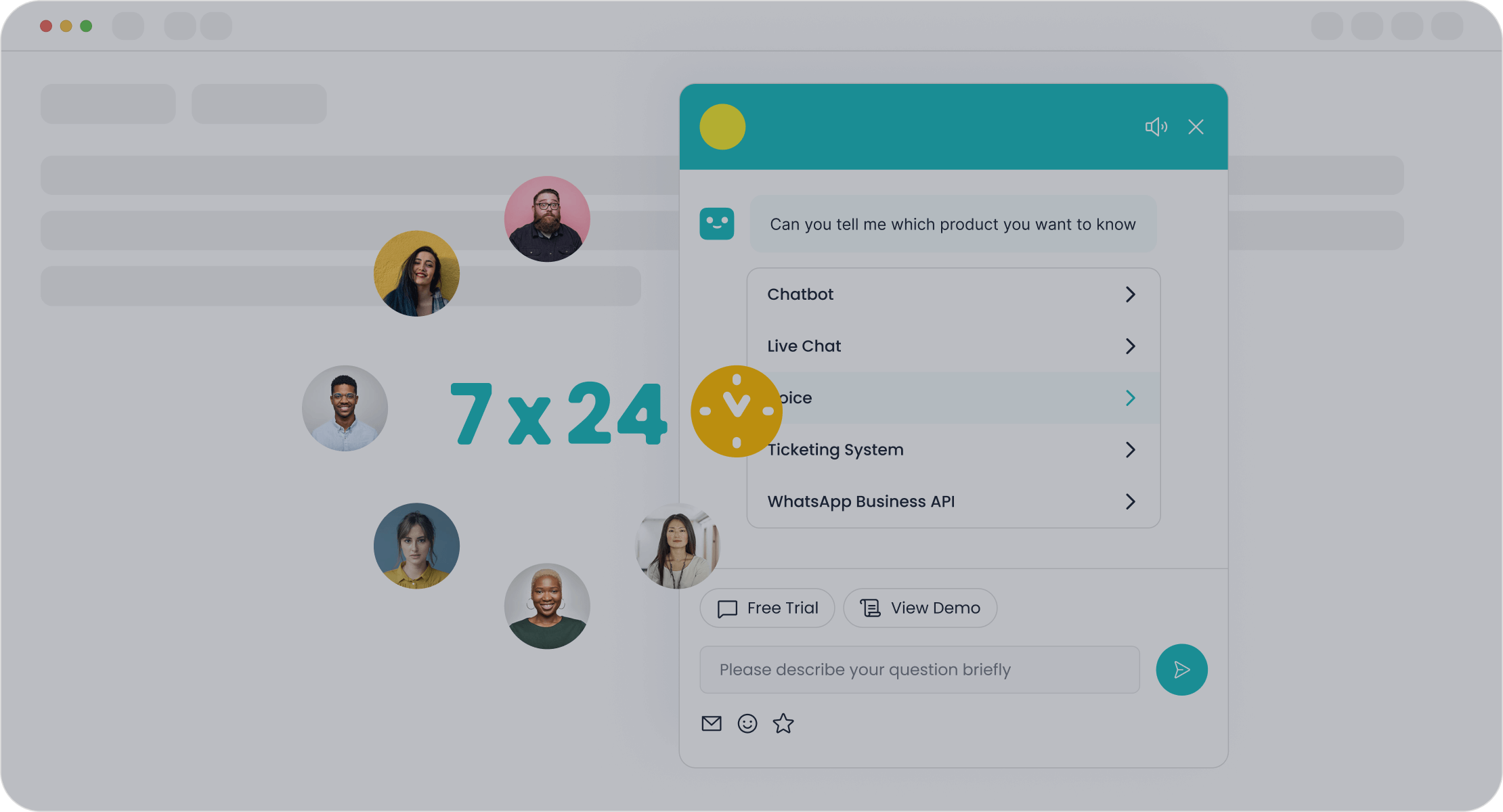
Sobot’s AI chatbot is a perfect example of how you can cut costs while boosting efficiency. It operates around the clock, autonomously handling regular queries and assisting agents with complex issues. This not only saves you money but also improves your customer experience. With its no-coding-required setup and multilingual support, Sobot’s chatbot is easy to implement and scales effortlessly with your business needs.
By adopting AI chatbots, you’re not just saving money—you’re also creating a more efficient and customer-friendly operation. Whether it’s reducing staffing costs, improving resolution times, or enhancing customer satisfaction, chatbots are a smart investment for any e-commerce beginner.
How to Implement the Best AI Chatbot for Ecommerce
Choosing the Right Chatbot Platform
Picking the right chatbot platform is the first step in creating an effective e-commerce chatbot. Not all platforms are created equal, so you need to evaluate them based on key criteria. For example, how fast does the chatbot respond to customer queries? A quick response time keeps users happy and engaged. You also want a platform with a high resolution rate—this shows the chatbot can handle inquiries without needing human intervention. Platforms that boost user satisfaction and conversion rates are ideal for driving business goals.
Here’s a table to help you understand what to look for:
| Criteria | Description |
|---|---|
| Response Time | Measures how quickly the chatbot responds to user queries, impacting user satisfaction. |
| Resolution Rate | Indicates the chatbot's ability to resolve inquiries without human intervention, enhancing efficiency. |
| User Satisfaction | Reflects user contentment with interactions, often gauged through surveys for improvement insights. |
| Conversion Rates | Tracks successful user actions, such as purchases, to evaluate the chatbot's effectiveness in driving business goals. |
Sobot’s AI chatbot checks all these boxes. It offers lightning-fast responses, resolves up to 80% of routine queries, and boosts conversions by 20%. Plus, it’s multilingual and integrates seamlessly with platforms like WhatsApp and social media, making it a versatile choice for ecommerce chatbot development.
Designing Your Chatbot’s Workflow
Once you’ve chosen your platform, it’s time to design your chatbot’s workflow. This step is crucial because a well-designed workflow ensures your chatbot delivers a smooth and engaging experience. Start by identifying your audience and setting clear goals. Are you trying to reduce cart abandonment or improve customer support? Knowing your objectives will guide the design process.
Here are some best practices for designing an effective e-commerce chatbot workflow:
- Choose the right audience and goal.
- Pick the right communication channels.
- Decide on the chatbot types to use.
- Design an accessible chat widget.
- Combine AI with rule-based bots.
- Connect all of your platforms.
- Test the chatbot flows in real life.
- Measure your results frequently.
- Continuously optimize the software.
For example, Sobot’s AI chatbot uses a point-and-click interface, making it easy to design workflows without coding. You can set up automated responses for FAQs, create personalized product recommendations, and even integrate proactive messaging to engage customers. Testing and optimization are also simple with Sobot’s reporting tools, ensuring your chatbot performs at its best.
Integrating the Chatbot with Your Ecommerce Platform
Integration is where your chatbot truly comes to life. It needs to work seamlessly with your ecommerce platform to provide a unified experience for your customers. Whether it’s Shopify, WooCommerce, or Magento, the chatbot should sync with your store’s backend to access inventory, order details, and customer data.
Sobot’s AI chatbot excels in integration. It connects effortlessly with popular ecommerce platforms and omnichannel communication tools like WhatsApp and SMS. This allows your chatbot to pull real-time data, answer customer questions, and even assist with order tracking. For example, OPPO used Sobot’s chatbot to integrate its global customer channels, achieving an 83% resolution rate and a 57% increase in repurchase rates.
To ensure smooth integration, follow these steps:
- Connect your chatbot to your ecommerce platform’s API.
- Sync customer data and order history for personalized interactions.
- Test the integration to identify and fix any issues.
- Monitor performance and optimize as needed.
By integrating your chatbot effectively, you’ll create a cohesive shopping experience that boosts customer satisfaction and drives sales.
Testing and Optimizing Your Chatbot
Testing and optimizing your chatbot is like fine-tuning a machine—it ensures everything runs smoothly and delivers the best results. You can’t just set up a chatbot and forget about it. Regular testing helps you identify areas for improvement, while optimization ensures your chatbot keeps up with customer expectations.
Why Testing Matters
Testing is crucial for understanding how your chatbot performs in real-world scenarios. It helps you spot issues like slow response times or confusing dialogue paths. A/B testing is one of the most effective methods for refining your chatbot. By comparing different versions, you can see what works best for your audience. For example, testing conversational flow can reveal whether shorter or longer responses keep users engaged.
Here’s what testing can achieve:
- A/B testing boosts conversion rates by measuring variations.
- Tracking repeat usage highlights user retention, with optimized chatbots achieving up to 20% repeat users.
- Continuous testing fosters meaningful customer relationships.
A/B Testing Strategies
A/B testing isn’t just about tweaking one feature—it’s about experimenting with multiple elements to find the perfect balance. Here’s a breakdown of strategies you can use:
| Strategy | Description |
|---|---|
| Conversational Flow | Test different dialogue paths, including the order of questions and response length. |
| User Interface | Experiment with visual elements like button placement and rich media to enhance engagement. |
| Personalization | Implement techniques like addressing users by name and recommending products based on behavior. |
| Response Time | A/B test response times to find the optimal balance between speed and accuracy. |
| Language and Tone | Experiment with different tones to see which resonates better with users. |
For instance, Sobot’s AI chatbot allows you to test and optimize workflows with its intuitive interface. You can experiment with proactive messaging or personalized recommendations to see what drives better engagement.
Optimizing Your Chatbot for Peak Performance
Optimization is all about making your chatbot smarter and more efficient. Start by analyzing metrics like resolution rates, customer satisfaction scores, and repeat usage. If your chatbot struggles with certain queries, update its knowledge base. If response times are slow, tweak its settings to prioritize speed.
Here are some tips for optimizing your chatbot:
- Refine Conversational Flow: Use A/B testing to identify the most engaging dialogue paths.
- Enhance Personalization: Tailor responses based on customer behavior and preferences.
- Monitor Metrics: Track key performance indicators like resolution rates and repeat usage.
- Update Regularly: Keep your chatbot’s knowledge base fresh and relevant.
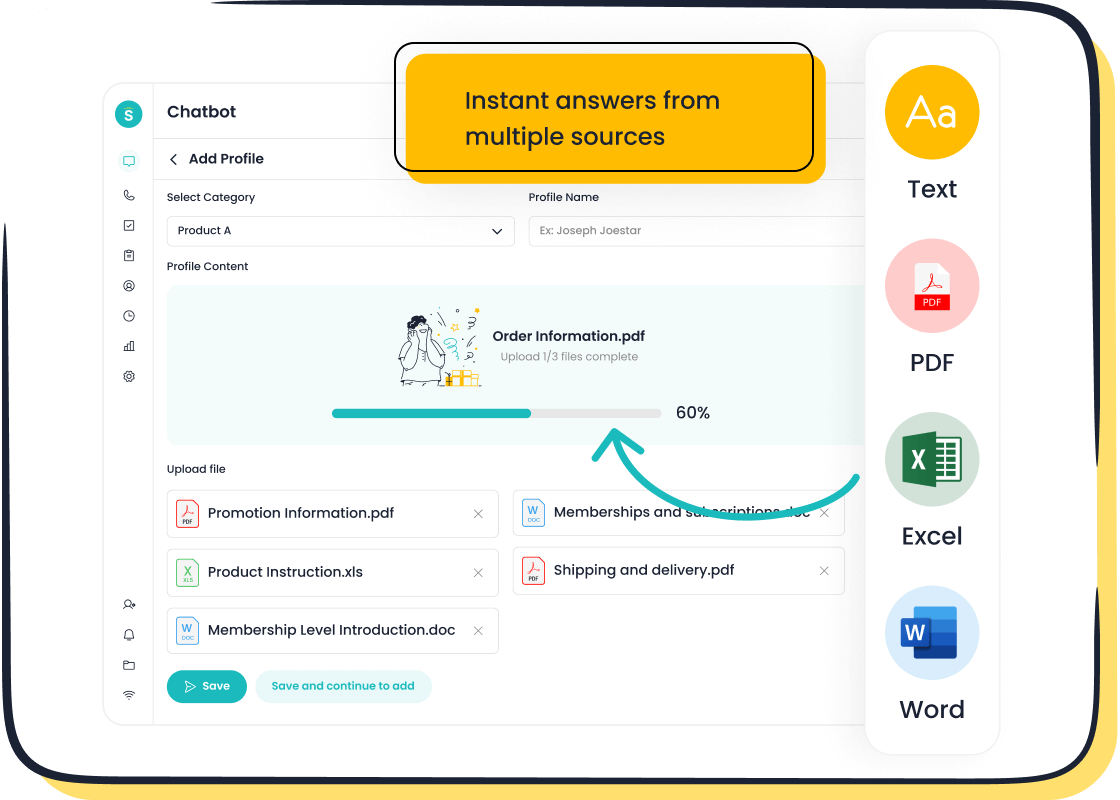
Sobot’s AI chatbot makes optimization easy. Its reporting tools provide insights into performance, helping you identify gaps and improve efficiency. For example, OPPO used Sobot’s chatbot to optimize its knowledge base, reducing maintenance efforts by 90% and achieving an 83% resolution rate.
Real-Life Example: OPPO’s Success Story
OPPO, a global leader in smart devices, partnered with Sobot to enhance its chatbot performance. By testing and optimizing its chatbot, OPPO achieved remarkable results. The chatbot resolved 83% of customer queries, received a 94% positive feedback rate, and boosted repurchase rates by 57%. These numbers highlight the importance of continuous testing and optimization.
Pro Tip: Don’t forget to test your chatbot in real-life scenarios. Simulate customer interactions to ensure it performs well under different conditions.
Testing and optimizing your chatbot isn’t a one-time task—it’s an ongoing process. By refining its features and monitoring its performance, you can create a chatbot that not only meets but exceeds customer expectations.
Best Practices for Using Ecommerce Chatbots Effectively
Leveraging Natural Language Processing (NLP)
Natural Language Processing (NLP) is the backbone of modern chatbots. It helps your chatbot understand and respond to customer queries in a way that feels natural and human-like. By leveraging NLP, you can make your chatbot smarter and more effective.
Here’s how NLP advancements improve chatbot communication:
- Intent Recognition: Your chatbot identifies what the customer wants, ensuring accurate responses.
- Entity Recognition: It extracts specific details like product names or order numbers to assist better.
- Context Management: Conversations flow smoothly, even if customers switch topics.
- Sentiment Analysis: Your chatbot detects emotions, tailoring responses to match the mood.
- Language Generation: Replies sound natural, making interactions feel less robotic.
For example, Sobot’s AI chatbot uses NLP to deliver seamless customer experiences. It understands multiple languages and adapts to different tones, ensuring every interaction feels personalized. This technology not only boosts customer satisfaction but also enhances your chatbot’s efficiency.
Personalizing Interactions with Customers
Personalization is key to creating memorable customer experiences. When your chatbot tailors its responses based on customer preferences, it builds trust and loyalty. Shoppers love it when brands make them feel valued.
Here’s why personalization matters:
- 71% of shoppers dislike impersonal interactions, while 76% prefer personalized experiences.
- 82% of consumers willingly share data for customized service.
- Businesses using AI chatbots for personalization report conversion rate increases of up to 80%.
Sobot’s AI chatbot excels at personalization. It analyzes browsing history, purchase patterns, and customer data to recommend products or promotions. This approach not only improves customer satisfaction but also drives repeat purchases. With AI-powered personalization, you can turn one-time buyers into loyal customers.
Monitoring and Improving Chatbot Performance
Monitoring your chatbot’s performance ensures it stays effective and meets customer expectations. Regularly tracking metrics helps you identify areas for improvement and optimize its functionality.
Key performance metrics include:
| Metric | Description |
|---|---|
| Average Conversation Duration | Reflects user engagement and complexity of interactions. |
| Retention Rates | Measures returning users, showing satisfaction and effectiveness. |
| Abandonment Rate | Highlights users leaving before resolving their queries, signaling potential issues. |
| Confidence or Accuracy Rate | Evaluates how well the chatbot understands and responds to inquiries. |
| Customer Satisfaction (CSAT) | Directly measures user satisfaction post-interaction. |
| Conversion Rate | Tracks how effectively the chatbot drives sales or desired actions. |
Sobot’s AI chatbot offers detailed reporting tools to monitor these metrics. For example, OPPO used Sobot’s chatbot to achieve an 83% resolution rate and a 94% positive feedback score. By analyzing data and optimizing workflows, you can ensure your chatbot delivers top-notch customer experiences.
Pro Tip: Regularly update your chatbot’s knowledge base and test its conversational flow to keep it performing at its best.
Balancing Automation with Human Support
Finding the right balance between automation and human support is key to delivering exceptional customer experiences. While a chatbot can handle routine tasks like answering FAQs or tracking orders, some situations still require a human touch. For example, resolving complex issues or addressing emotional concerns often benefits from human empathy and problem-solving skills.
The most powerful aspect of automation is its ability to break the linear relationship between growth and costs. While traditional scaling models require adding staff proportionally as sales increase, automation changes this equation fundamentally.
Automation, especially through ai-powered chatbots, offers unmatched efficiency. It streamlines processes, reduces costs, and ensures 24/7 availability. However, human intervention adds value in areas where personalization and trust-building are essential. Mapping the customer journey can help you decide where automation works best and where human support is necessary. For instance, automated emails can update customers on order statuses, but a live agent might be better suited for handling complaints.
Here’s a quick comparison of automation and human support:
| Aspect | Automation Benefits | Human Intervention Challenges |
|---|---|---|
| Efficiency | Streamlines processes, reduces costs | Introduces human errors, inefficiencies |
| Personalization | Enhances customer experience | May lack personalization in automated responses |
| Problem Solving | Handles routine tasks effectively | Adds value and builds trust |
| Technical Issues | Can face technical glitches | Requires human oversight in complex situations |
| Customer Preferences | Some prefer self-service options | Others prefer personalized human interaction |

To strike the right balance, start by identifying your business needs. Use tools like Sobot’s chatbot to automate repetitive tasks while freeing up your team for more complex interactions. Sobot’s ai-driven chatbot operates 24/7, handling routine queries with precision. At the same time, it integrates seamlessly with human agents, ensuring a smooth handoff when needed. This hybrid approach not only improves efficiency but also enhances customer satisfaction.
Pro Tip: Perform a cost-benefit analysis to determine the best mix of automation and human support for your operations. Custom-made tools like Sobot’s chatbot can offer the flexibility you need to adapt to changing customer demands.
By combining the strengths of automation and human support, you can create a customer service strategy that’s both efficient and empathetic. This balance ensures your customers feel valued while keeping your operations scalable and cost-effective.
Real-Life Examples of Ecommerce Chatbots
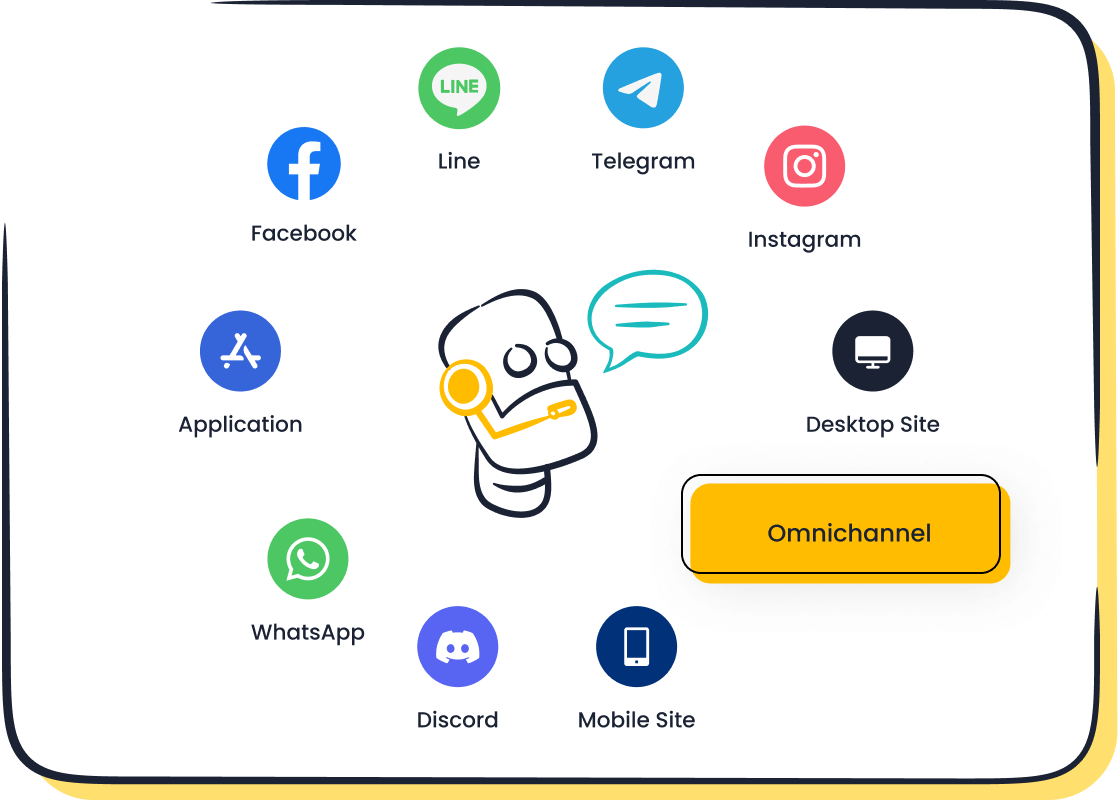
Case Studies of Successful Implementations
AI chatbots have revolutionized ecommerce by delivering faster responses, reducing costs, and improving customer satisfaction. Let’s look at some real-world examples of their success:
- Businesses using chatbots have reduced abandoned carts by 12%. This means fewer missed sales opportunities and happier customers.
- Representatives using chatbots save an average of 2 hours and 20 minutes daily, according to HubSpot. This frees up time for more complex tasks.
- Personalized interactions drive loyalty. In fact, 77% of consumers are more likely to recommend or pay more for brands offering tailored experiences.
These examples highlight how chatbots can transform your ecommerce operations. They don’t just improve efficiency—they also build trust and engagement with your audience.
Lessons Learned from Leading Ecommerce Brands
Top ecommerce brands have shown us how to use chatbots effectively. Here are some key takeaways:
| Statistic | Description |
|---|---|
| 67% | Increase in ecommerce sales attributed to conversational AI. |
| $112 billion | Projected retail sales driven by AI chatbots by 2023. |
| 73% | Customers preferring self-service chatbots to save time. |
| 7-25% | Annual revenue growth for retailers using conversational commerce effectively. |
These numbers prove that chatbots are more than just a trend—they’re a necessity. Brands that embrace conversational AI see higher sales, better customer satisfaction, and faster growth. The lesson? Start small, test often, and focus on creating meaningful interactions.
How Sobot’s Chatbot Transformed OPPO’s Ecommerce Strategy
OPPO, a global leader in smart devices, faced challenges during peak shopping periods. High inquiry volumes overwhelmed their team, leading to delays and customer dissatisfaction. That’s when they turned to Sobot’s AI chatbot.
Sobot’s chatbot handled repetitive queries, freeing agents to focus on complex issues. It also optimized OPPO’s knowledge base, reducing maintenance efforts by 90%. The results were remarkable:
| Metric | Outcome |
|---|---|
| Reduction in inbound discussion | 20% |
| Increase in positive feedback | 96% + |
| Correct answers provided | 80% |
| Customer satisfaction (CSAT) | 95% |
| Self-service question resolution | 22.2% |
| Problem resolution rate | 85% |
| Customer happiness | 99% |
| Sign-off rate increase | 35% |
| COD collection rate increase | 40% |
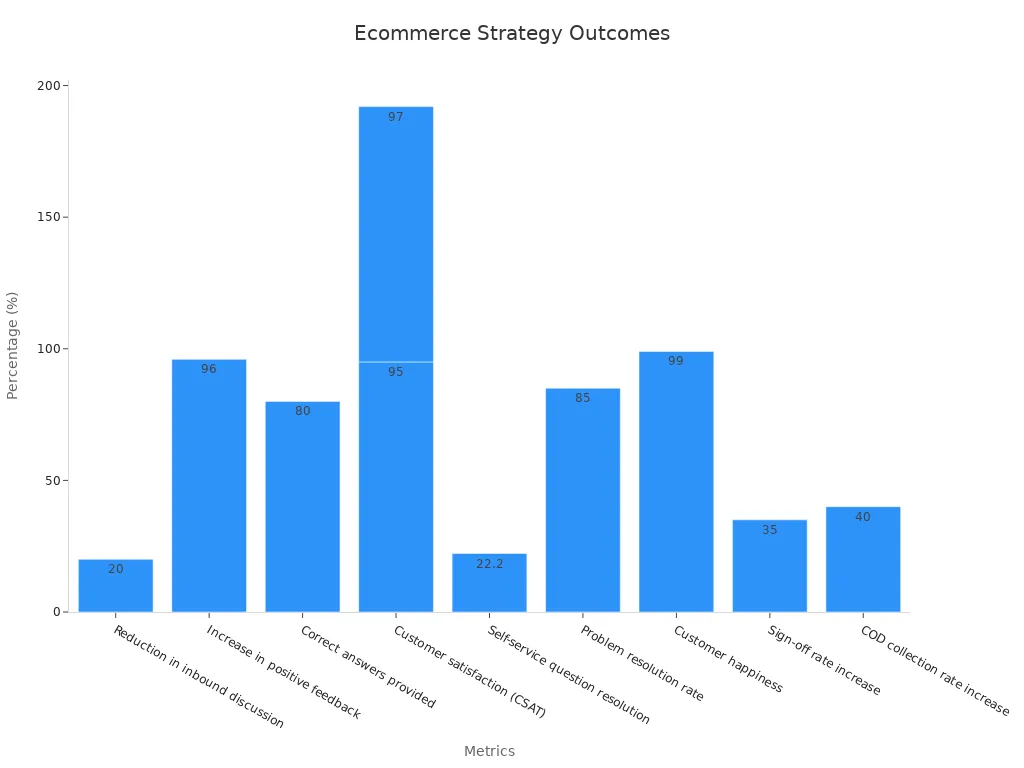
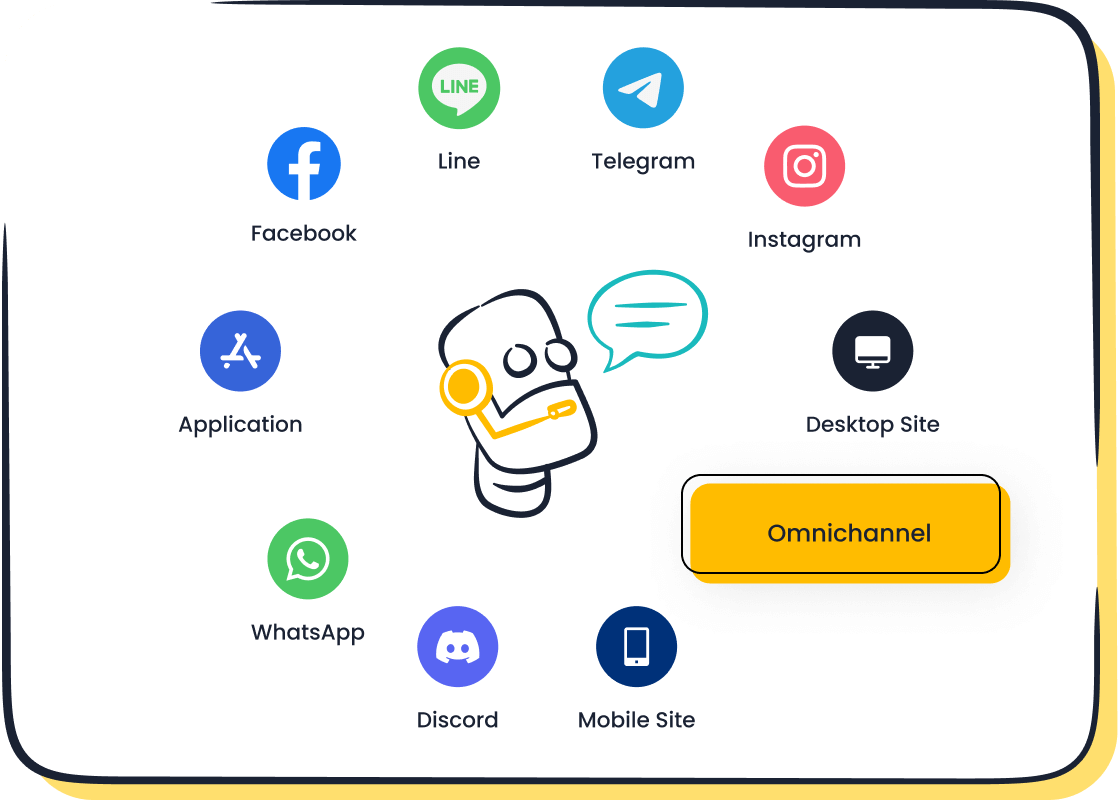
By integrating Sobot’s chatbot, OPPO achieved an 83% resolution rate and a 57% increase in repurchase rates. These results show how the right chatbot can transform your ecommerce strategy, making it more efficient and customer-friendly.
Pro Tip: If you’re looking to replicate OPPO’s success, start by identifying repetitive tasks that a chatbot can handle. Then, choose a platform like Sobot that offers easy integration and powerful AI capabilities.
AI chatbots are transforming ecommerce by enhancing customer service, boosting sales, and cutting costs. They work 24/7, personalize experiences, and handle routine tasks efficiently. Tools like Sobot’s chatbot make it easy for beginners to get started with no coding required. Imagine increasing your sales by 20% or saving 50% on operational costs—these results are within reach. Take the first step today. Explore how AI can revolutionize your store and create a seamless shopping experience for your customers.
Ready to start? Check out Sobot’s chatbot solutions here and see the difference for yourself.
FAQ
What is the difference between chatbots and live chat?
Chatbots are automated tools powered by AI that handle customer queries instantly. Live chat connects customers with human agents for more complex issues. Combining both ensures faster responses and personalized customer support, improving customer retention and satisfaction.
How do AI chatbots improve customer retention?
AI chatbots personalize interactions by analyzing customer behavior and preferences. They recommend products, send timely reminders, and provide 24/7 support. This builds trust and keeps customers coming back, boosting retention rates.
Can AI chatbots handle multilingual customer support?
Yes, most AI chatbots, like Sobot’s, support multiple languages. They help you connect with a global audience, ensuring every customer feels understood and valued, regardless of their language.
Are AI chatbots expensive to implement for ecommerce?
Not at all! AI chatbots save costs by automating routine tasks and reducing the need for additional staff. For example, Sobot’s chatbot can cut operational expenses by up to 50%, making it a cost-effective solution for ecommerce businesses.
How do I measure the success of my AI chatbot?
Track metrics like resolution rates, customer satisfaction scores, and conversion rates. For instance, OPPO achieved an 83% resolution rate using Sobot’s chatbot. Regularly monitor these metrics to optimize performance and ensure your chatbot meets business goals.
See Also
Enhancing Customer Satisfaction Through E-commerce Chatbots
Increasing Sales with E-commerce Live Chat Solutions
Simple Ways to Integrate Chatbots on Your Website
